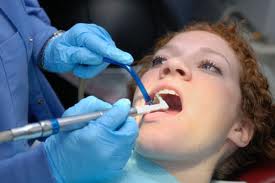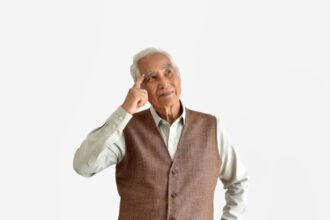Cardiopulmonary Resuscitation, otherwise known as CPR, is a resuscitation technique that can save lives in a variety of emergency situations. Anyone can perform CPR with proper training, not just medical professionals. To start learning CPR, you’ll need to sign up for an online or in-person CPR training course. If you understand the basic techniques and terminology surrounding CPR, you can help save lives in the event of an emergency.
Individuals who have taken or are interested in taking a CPR training course may be curious about the development of CPR and when it was first used. The best practices for CPR have seen considerable change over time to increase the effectiveness of the technique and decrease the associated risks. Scientific advances have also refined the process and helped develop technology like the AED (Automated External Defibrillator) to assist with resuscitation.
CPR training, particularly when studied alongside first aid, can give you the knowledge and confidence necessary for taking action in an emergency. However, most training courses do not cover the history of CPR. This article will take you through some of the medical history surrounding CPR and first aid training for the developments that lead to its modern form.
The Bellows Method- 1500s
There were many forms of resuscitation in use before the invention of CPR that pushed air directly into the lungs in an attempt to aid breathing. One of the first notable methods was the bellows method, invented by the Swiss physician Paracelsus in the mid-1500s. To begin treatment using this method, the rescuer would move the affected person into a relaxed sitting position. Then, the person administering care would use a set of fireplace bellows to push air through the mouth and into the lungs. There were various forms of this method in use throughout Europe and the Americas for the next several hundred years.
The bellows method targeted the victim’s respiratory system directly by pushing air into the body but allowed for significantly less exhalation than modern CPR. However, many scientists and medical historians often cite this method of resuscitation as one of the foundations for cardiopulmonary resuscitation.
Leroy Method- 1820s
There were several new resuscitation techniques that scientists and physicians practiced during the early 1800s, but none moved the medical field more towards modern CPR than the Leroy method. This method was one of the earliest resuscitation techniques to lie the victim on their back to aid breathing. Physicians using the Leroy method applied significant pressure to the entire chest, then relieved the pressure quickly in an attempt to restart breathing. This method was only effective in situations where the victim could resume breathing quickly, and as a result, would rarely prove effective with sustained use.
Holger Neilson Method- 1932
As modern medicine moved forward into the 1900s, resuscitation techniques began to involve a combination of mouth-to-mouth and chest compressions. The Holger Neilson method, named for its two inventors, involved laying the affected person on their back, then applying pressure to the upper back. The rescuer would apply these compressions in combination with lifting the arms and moving them forward and backward from the chest. This method has a few limited uses today and can help save lives when combined with CPR resuscitation. You can read more about the Holger Neilson method of resuscitation with this article.
Modern Cardiopulmonary Resuscitation- 1950s
In 1954, Dr. James Elam and Dr. Peter Safar demonstrated one of the earliest forms of modern CPR. The pair introduced a method that involved a combination of mouth-to-mouth breaths and chest compressions. This combination became the standard for resuscitation and has proved to be the most effective method of resuscitation in almost all emergencies. The victim is usually treated in this method while lying on their back, with their mouth open and head tilted back.
In the fifty or so years that followed Elam and Safar’s demonstration, modern organizations such as the American Heart Association (AHA) have helped refine the technique. Today, the AHA releases updates for CPR guidelines and techniques that have assisted in making CPR easy to learn and effective without professional medical guidance.
AHA Guidelines- 2010
The most recent American Heart Association guidelines were released in 2010 and changed the primary method of CPR from ABC to CAB (Compressions, Airway, Breathing). A CPR training course can help you get familiar with each of these steps and understand the proper breathing and compression rates for performing resuscitation. The most up-to-date CPR methods also incorporate an AED (Automated External Defribulator), which are now available in many workplaces and public buildings. CPR training under current guidelines is a part of the training process for many jobs outside of the health care or medical industry.
How Does the History CPR Affect Its Modern Application?
As CPR has progressed and the method for mouth-to-mouth breathing and chest compressions improves, the success rate of resuscitation has improved immensely. Without the experiments and trials involved with the earlier resuscitation methods, modern scientists may have taken longer to develop this life-saving technique. Today, CPR owes much of its current success to these early physicians and their methods of resuscitation.
CPR is much easier to perform and learn than many of the earlier resuscitation techniques. With the advent of the internet, it has never been easier to sign up for online or in-person CPR training. Performing CPR requires a set technique to be effective- you should never perform CPR if you have not received prior certification, as this may put the affected person at additional risk.
Conclusion– When was CPR Developed and How Was It First Used?
The history of cardiopulmonary resuscitation extends much farther back than the official invention of modern CPR in the mid-twentieth century. Many CPR training classes do not cover this history in their coursework and instead prioritize teaching the most up-to-date methods for compressions and rescue breaths. However, the history of CPR shows us how far medicine has come in its ability to save lives. Today, CPR is a method that anyone can learn to improve their response to many emergency situations.










